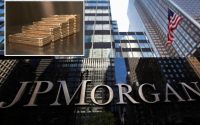Inflation rose 6% in February as Fed mulls more rate hikes
Inflation rose in February as sudden turmoil in the US banking sector sparked uncertainty about the Federal Reserve’s next move in the fight to bring down prices.
The February reading of the Consumer Price Index – a closely watched measure of inflation that tracks changes in the costs of everyday goods and services – rose 6% compared to the same month one year ago.
On a monthly basis, prices increased 0.4% compared to January, according to the Bureau of Labor Statistics’ release on Tuesday.
Core inflation, a measure that excludes volatile food and energy prices, rose 5.5% year-over-year.
The report was in line with expectations. Ahead of the February CPI report’s release, economists expected headline inflation to rise by 6% and core inflation to increase by 5.5% year-over-year. Prices were expected to rise by 0.4% from January to February.
Investors anxiously awaited the latest inflation data amid mounting uncertainty about the Fed’s next policy move. The Fed could think twice about implementing another interest rate hike following economic turmoil caused by the collapse of Silicon Valley Bank.

Just days before SVB’s collapse, a series of hotter-than-expected economic reports and inflation data had led Fed Chair Jerome Powell that the central bank would have to raise interest rates even higher than expected to cool the economy.
Inflation has fallen from its peak of 9.1% last June, but it is still running much higher than the Fed’s 2% target.
But the tech lender’s rapid downfall sparked fears of a nationwide run on banks and a systemic meltdown that could upend the broader economy.

In an effort to ease the public’s concerns, the Fed, the Treasury Department and the FDIC stepped in to guarantee all deposits held by SVB and another shuttered institution, Signature Bank in New York.
Given the economic instability, most experts now expect the Fed to implement a smaller quarter percentage point hike at its meeting later this month – if they raise interest rates at all.
As of Monday night, the market was pricing in a 62% probability of a quarter-point hike and a 38% probability that benchmark rates would remain unchanged, according to CME Group’s FedWatch tool.
That was a rapid shift from the end of last week, when the market projected a nearly 60% chance of a quarter-point hike and a roughly 40% chance of a supercharged half-point hike.


